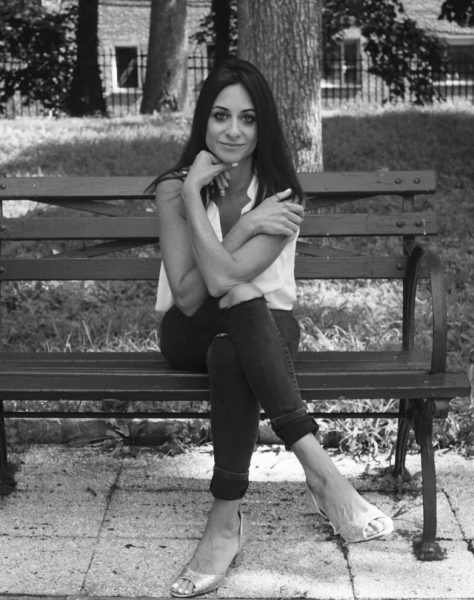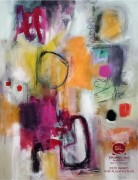I’m always fascinated by a writer’s choices when it comes to point of view, and this one both has me hooked and breaks my heart. The confidence with which you inhabit this nameless first-person teacher’s habits, the way in which you chart her fluid movement between empathy and the necessary mechanization of teaching is so masterful. Why did you choose this person as the narrator for this story? What does she tell us that her student can’t?
I’m glad you felt that way—that means so much. I chose to write from a point of view that has a particular tension that I’m familiar with. There’s a lot of tension in hearing a story second hand and using your imagination to fill in the blanks of what you are afraid to ask. Part of this story is the story the narrator doesn’t know about and how she wrestles with that in this short five-minute conversation. And as a teacher in my actual life, I experience this tension a lot-—also the tension of having a classroom full of kids and simultaneously holding one-on-one conversations—in just minutes—that most people would only imagine would happen in a private office somewhere with two couches and hours of discussion. This is what teaching is. It’s learning to manage these heart-wrenching conversations while timers are counting down, while the world is moving, bubbling the attendance sheets, all business and heartbreak and love.
The way that time works in this piece fascinates me. When I read it, it felt structured as the antithesis to the “Time Passes” section in Virginia Woolf’s To The Lighthouse but still nodding to the expansiveness of Woolf’s details, but here charting a busy schoolroom rather than a quiet domestic scene. How did you decide on time as the governing mechanism for this piece of flash? What decisions did you have to make as a writer to make this narrative structure work effectively?
I find myself obsessed with the intermingling of experiences. There’s that saying, there’s my story, your story, and the truth. I like to find that truthful part as best as I can when telling my stories–and that usually involves taking more than one point of view and trying to find a moment where they intersect. In this piece, the timer serves as the intersection—the constant where both characters are brought together. For me, it also added a level of realism in the way that even when we are going through life’s most harrowing moments, the clock is still there, ticking—even more so in a classroom with a teacher and a student and a countdown on the wall.
Your description of your subject here is so precise: the lines on the student’s wrists, the acne on her cheeks, her clothing size, her twisted-up earring backs. There’s such precision, but none of it feels voyeuristic. How did you choose descriptive details that make your young subject feel real?
The tiniest details have enormous power. They are such a form of currency for me as a writer. I don’t always know why I choose them, but I’ve never been great at seeing a whole picture—I usually just notice something small. Or a couple of small aspects. A broken sign outside the park—but I could never tell you what equipment they actually have inside. It’s just the way my observation works. It’s helpful and hard, in writing and in life.
When I read this piece, I can easily see the trajectory of a linked collection. Is that a possibility for this character? What other stories might she have to tell?
This is definitely a possibility. For so many years the narrative I’ve seen around teaching and urban education is so narrow and stereotypical and confining. I believe the stories we tell about our students are really dangerous if we aren’t careful and don’t think about why we are telling them. Yes, we get it, our urban youth have a lot against them—and there are struggles to highlight if we choose to focus there. But there is so much life and light, and that’s what I walk into every day. We don’t need any savior stories. Not one more. None. As a teacher for fifteen years, I have not found my experience to be heroic—at all. It’s been about love. Not the love given, but the love received—the magic of conversations, hugs, tears cried, the belly laughs lived.
This piece is so powerful that I’d love to know what influences you’re drawing from. What are the flash pieces that you keep coming back to?
My voice is something that I hear inside my head and I’m not always sure where it comes from. It’s like a song and it sounds a certain way and translates that way on the page. But without other pieces of flash by writers I love and admire, my own voice would be stuck half the time. There are certain moments when I read a piece of flash that is so powerful, I just feel immediate permission to let my voice go. Actually, your piece “We All Know About Margo” did that for me a while back. I also feel compelled to write after I read anything by Monet P. Thomas—her flashback challenge actually inspired me to add a sexual element to this story. But mostly, the way my students talk to me, our short snippets of conversations–they are a type of flash in themselves, and coming away with that energy I always feel inspired to write.



 The core workshop of SmokeLong Fitness is all in writing, so you can take part from anywhere at anytime. We are excited about creating a supportive, consistent and structured environment for flash writers to work on their craft in a community. We are thrilled and proud to say that our workshop participants have won, placed, or been listed in every major flash competition. Community works.
The core workshop of SmokeLong Fitness is all in writing, so you can take part from anywhere at anytime. We are excited about creating a supportive, consistent and structured environment for flash writers to work on their craft in a community. We are thrilled and proud to say that our workshop participants have won, placed, or been listed in every major flash competition. Community works.